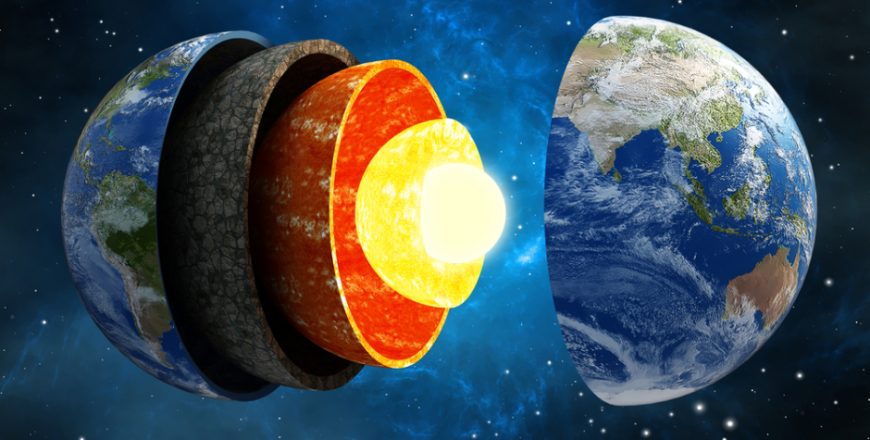Earth Science

What is Earth Science?
| i) Scientific Methods |
| ii) Scientific Models |
| i) Geology |
| ii) Oceanography |
| iii) Climatology and Meteorology |
| iv) Astronomy |
| v) Other Branches of Earth Science |
The Earth’s Surface
| i) Location and Direction |
| ii) Topography |
| i) Maps and Map Projections |
| ii) Topographic Maps |
| iii) Computer Generated Maps and GPS |
Minerals
| i) Formation and Identification of Minerals |
| ii) Mining |
| iii) Uses of Minerals |
Rocks
| i) Rock Cycle |
| ii) Types of Rocks |
| i) Sediments |
| ii) Sedimentary Rock Formation |
Earth's Energy
| i) Energy, Fuel and Heat |
| ii) Types of Energy Resources |
| i) Solar Energy |
| ii) Water Power |
| iii) Wind Power |
| iv) Biomass |
| v) Geothermal Energy |
| i) Fossil Fuels |
| ii) Coal |
| iii) Oil |
| iv) Natural Gas |
| v) Nuclear Energy |
Plate Tectonics
| i) Crust and Lithosphere |
| ii) Mantle |
| iii) Core |
| i) Evidence for Continental Drift |
| i) Bathymetry |
| ii) Seafloor Magnetism |
| iii) The Seafloor Spreading Hypothesis |
| i) The Earth’s Tectonic Plates |
| ii) Plate Boundaries |
| iii) Movement of Plates and Interplate Activity |
Earthquakes
| i) Geological Structures |
| ii) Types of Stress |
| ii)Stress and Mountains |
| i) What Causes Earthquakes? |
| ii) Earthquake Zones |
| iii) Seismic Waves |
| iv)Tsunami |
| i) Measuring Earthquakes |
| ii) Mercalli Intensity Scale |
| iii) Predicting Earthquakes |
| i) Earthquake Damages |
| ii) Safe Structures |
| iii) Safety Measures |
Volcanoes
| i) Formation and Occurrence |
| ii) Hotspots |
| i) Types of Eruptions |
| ii) Magma and Lava |
| iii) Predicting Volcanic Eruptions |
| i) Composite Volcanoes |
| ii) Shield Volcanoes |
| iii) Cinder Cones |
| iv) Super Volcanoes |
| i) Landforms from Lava |
| ii) Landforms from Magma |
| iii) Hot Springs and Geysers |
Weathering and Soil Formation
| i) Mechanical Weathering |
| ii) Chemical Weathering |
| iii) Differential Weathering |
| i) Characteristics and Importance |
| ii) Formation, Texture and Composition |
| iii) Horizons and Profiles |
| iv) Types of Soil |
| v) Soil Conservation |
Erosion and Deposition
| i) By Streams and Rivers |
| ii) By Groundwater |
| i) Wave Action |
| ii) Wave Deposition |
| iii) Protecting Shorelines |
| i) Transport of Particles by Wind |
| ii) Types of Sand Dunes |
| i) Glaciers – Formation and Movement |
| ii) Glacial Erosion |
| iii) Glacial Deposition |
| i) Downhill Movement of Material |
| ii) Types of Movement |
The History of the Earth
| i) Geologic Time |
| ii) Relative and Absolute Dating of Rocks |
| iii) The Geologic Time Scale |
| i)The Earth and the Solar System |
| ii)The Earth’s Atmosphere |
| i) Diversity of Life |
| ii) Adaptations and Evolutions |
| iii) Fossils |
| iv) Phanerozoic Eon |
Earth's Fresh Water and Oceans
| i) The Water Cycle |
| ii) Distribution of Water |
| i) Surface Water |
| ii) Ground Water |
| i) Understanding the Ocean |
| ii) Waves, Tides and Currents |
| iii) The Seafloor Resources |
| iv) Ocean Life |
The Earth's Atmosphere
| i) Layers of the Atmosphere |
| ii) Energy Sources |
| iii) Wind and Wind Belts |
| i) Atmospheric Water |
| ii) Changes in Weather |
| iii) Storms |
| iv) Forecasting the Weather |
| i) What is Climate? |
| ii) Climates Around the World |
| iii) Climate Change |
Ecosystems and Man
| i) Biological Communities |
| ii) Members of the Ecosystem |
| iii) Flow of Matter and Energy in the Ecosystem |
| iv) The Carbon Cycle |
| i) Population Growth |
| ii) Sustainable Development |
Pollution
| i) Soil Erosion due to Human Actions |
| ii) Hazardous Waste |
| iii) Preventing Land Pollution |
| i)Human Uses of Water |
| ii) Water Distribution and Shortage |
| iii) Water Pollution |
| iv) Safeguarding Water |
| i) Types and Causes of Air Pollution |
| ii) Effects of Air Pollution |
| iii) Reducing Air Pollution |
Conservation of Resources
| i) Common Resources in Use |
| ii) Human Population and Resource Use |
| iii) Resource Availability |
| iv) Conserving Natural Resources |
| i) Obtaining Energy |
| ii) Energy Efficiency |
| iii) Energy Conservation |
Space
| i) Telescopes |
| ii) Early Exploration |
| iii) Recent Exploration |
| i) Planet Earth and Its Motions |
| ii) The Moon |
| iii) The Sun |
| iv) The Sun and the Earth-Moon System |
| i) The Inner Planets |
| ii) The Outer Planets |
| iii) Other Objects in the Solar System |
| i) Stars |
| ii) Galaxies |
| iii) The Universe |
